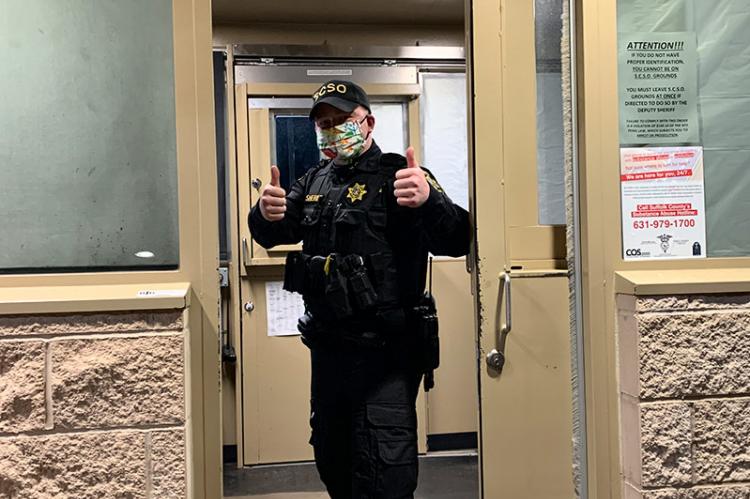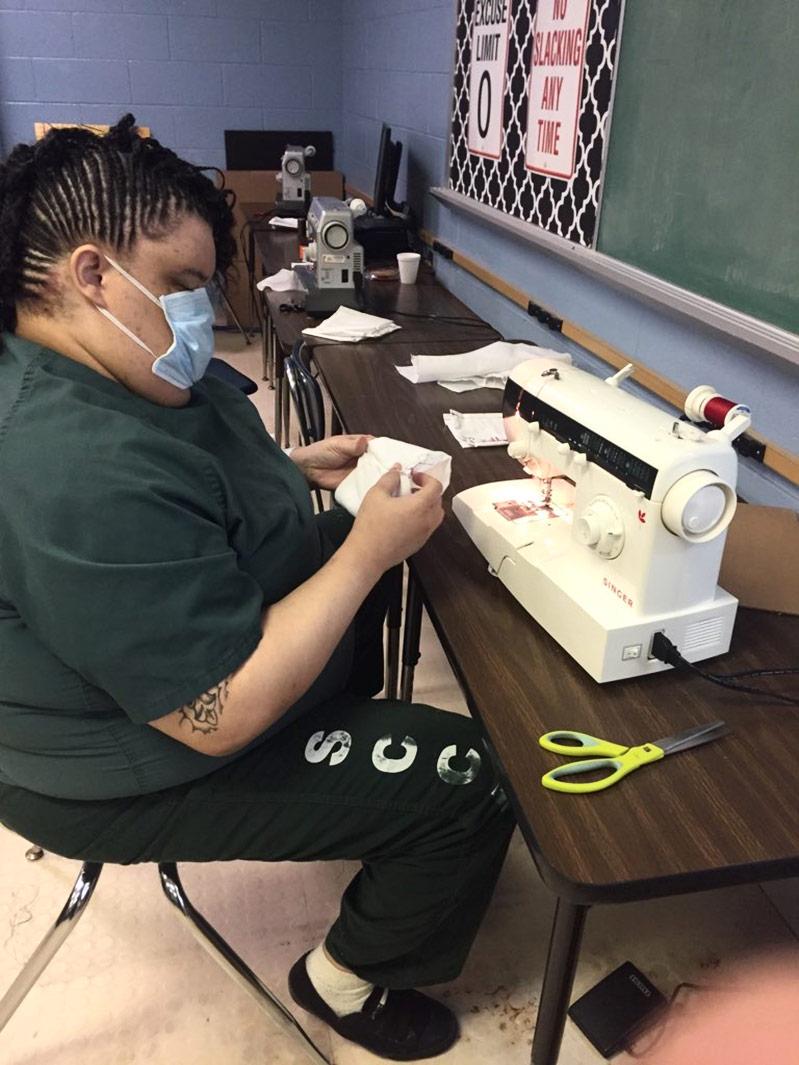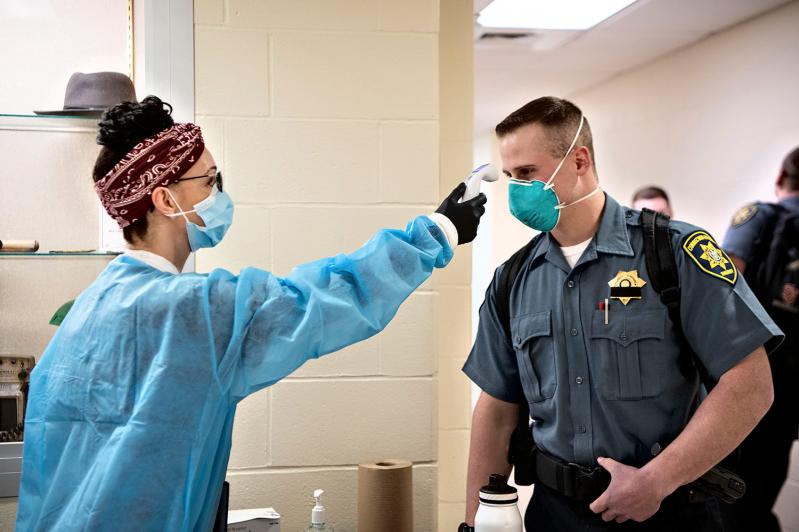For nearly a month after Covid-19 arrived in New York, the Suffolk County Sheriff’s Office managed to keep the virus from infecting inmates in county jails, though it has spread rapidly through jails in Chicago and Los Angeles and has killed two prisoners at Rikers Island. Last week, late on April 8, when the county’s first inmate was diagnosed with the virus, Sheriff Errol Toulon Jr. said he was confident that his office was doing everything possible to keep the situation in hand, thanks to early planning and cooperation from both staff and inmates.
Mr. Toulon, who worked on Rikers Island for 36 years, knows all too well how easy it is for a virus to spread in a jail system, having been the deputy commissioner during the Ebola threat. His administration took the specter of Covid-19 seriously early on, even before officers began coming down with symptoms. So far, 15 officers have tested positive. Two have already returned to work and nine are waiting for clearance.
When the country’s first cases were diagnosed in Washington State, the sheriff’s office began working on a plan. Suffolk’s first case was diagnosed on March 8, and his office was able to implement protective measures by the next day.

Officers experiencing even the slightest of symptoms were asked to stay home, away from the jails. Newly arriving inmates were transported to the facilities separately and put in separate quarters — a “quarantine pod” — for 14 days. Medical staff evaluated them three to four times a day, and they were issued surgical masks. They were not moved into the general population until they showed no signs or symptoms of the virus.
The fact that there is space within the jails to isolate new inmates and those possibly exposed has been a big help, the sheriff said. “Remember, our population is greatly reduced due to bail reform, so I do have the space in the facility to spread out the inmates.” (The bail reform laws, which he and many other officials opposed, were recently amended.)
Before bail reform, there were, on average, 900 inmates in the Suffolk County Correctional Facilities. At present, there are 545 — 303 in Riverside and 235 in Yaphank, with 7 housed elsewhere. Eighteen are over the age of 60, considered a vulnerable population. One is over 70.
Since the virus began spreading, the State Parole Board has released 15 parole violators from county custody, and many others statewide. Visits to inmates have stopped, but they have been given more time for phone calls to make up for it, as well as more out-of-cell time, extra food, and board games. Deputy wardens have gone into the housing areas to talk to inmates about their concerns. “We want to let them know that we’re doing our best to control the virus,” Mr. Toulon said.
Also, he said, many inmates do not have access to medical care outside of the jail. “They know that if they were to develop sign or symptoms they are going to be treated immediately as opposed to what you or I would have to go through to call up and make an appointment for a test and everything else.”
The inmate diagnosed last week, a man over the age of 60, came down with a fever at the Riverside jail on the evening of April 8. He was taken to a local hospital, where he was quickly diagnosed, thanks to new rapid tests the hospital had just received. He remains stable and is being attended to by medical staff.

After the inmate was diagnosed, the housing area he was in was closed. The 23 other inmates in that housing area have been moved to a separate isolation pod, where they will be monitored three to four times a day by the medical staff, for at least two weeks. The 18 corrections officers who had come into contact with the inmate are now self-quarantining and will report to the medical evaluation unit if they develop symptoms. Inmates who may have been in contact with officers diagnosed have also been in those pods.
Mr. Toulon said the inmate had contracted the virus from one of the corrections officers who tested positive, as he had not had any visitors since he entered custody in August. People can transmit the virus even before they are symptomatic. Officers have their temperatures taken at the beginning of each shift, and all staff must wear masks while on duty.
Anyone who tests positive has to stay out of the jail for 14 days, in keeping with the Centers for Disease Control guidelines. The sheriff’s office has implemented an extra layer of protection, as well. After the 14th day, those who tested positive are retested. If it comes back negative, the staff members go to the medical evaluation unit to see a physician who can return the officer to work. However, that is not always the case.
“We had one officer who was on the 16th day post-diagnosis, and under normal circumstances if you listen to the C.D.C. or anyone else they can return back to work. We had him tested and he came back positive,” Sheriff Toulon said. “I think we’ve done a really good job of trying to contain it.”
Signs have been posted in English and Spanish throughout the correctional facilities in Riverside and Yaphank advising inmates on social distancing and proper hygiene. The facilities are being cleaned three times a day: a general cleaning twice a day and also an intensive sanitization in the heavily trafficked areas on the midnight tour.
Attorneys are still allowed to visit inmates, though many have been reluctant and chosen to speak to their clients by phone. Attorney visits are down drastically. The sheriff’s office said there was an average of about 18 attorney visits per day between both correctional facilities. During the Covid-19 outbreak, there have been about 10 per week. Attorneys are also given masks, but the sheriff is considering moving meetings to booths so there is a barrier between attorney and client.
While courts are still closed, teleconferencing with a judge is happening when necessary from within the correc tional facilities. “I think the inmates are realizing that everything has changed; it’s not just what’s occurring physically inside the jail, but the whole criminal justice process.”
Even if the country were to open up on May 1, Sheriff Toulon said he is still evaluating when and how the correctional facilities will return to normal. Even if the courts open and the deputy sheriffs have to transfer inmates back and forth to court, they will still keep isolation measures in place.

